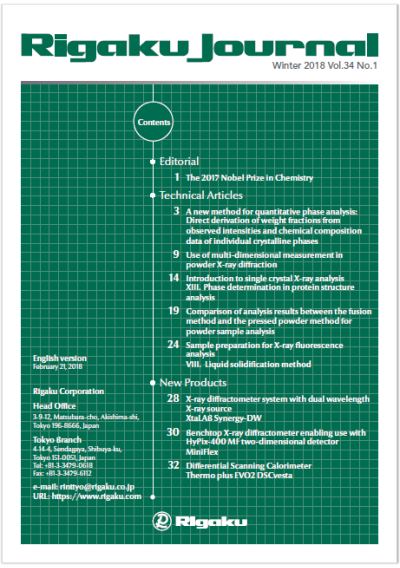Sample preparation by liquid and droplet methods have been discussed in the previous installment of “Sample preparation for XRF analysis”. In this issue, a novel preparation method by which liquid samples are solidified is described. Solidifying samples such as lubricating oils allows measurement to be performed in vacuum instead of helium and without the need of sample films. This is especially advantageous for the measurement of light elements which have poor X-ray transmission rates through helium atmosphere and films. Another benefit of the solidification method is prevention of particle settlement such as wear metals in used oils during measurement.
Sample preparation is performed by mixing the liquid sample with a solidifier, a material that is solid at room temperature but liquefies when heated. The well mixed heated liquid is then cooled down to form a solidified specimen. Due to the heating process, volatile liquids are not suitable for measurement by solidification. Once the sample is solidified, the original pure liquid cannot be isolated and therefore the method is technically a “destructive technique”.
This article describes the sample preparation procedure, suitable sample types, application examples and other considerations for analysis by solidification method with a wavelength dispersive X-ray fluorescent (WDXRF) spectrometer.

